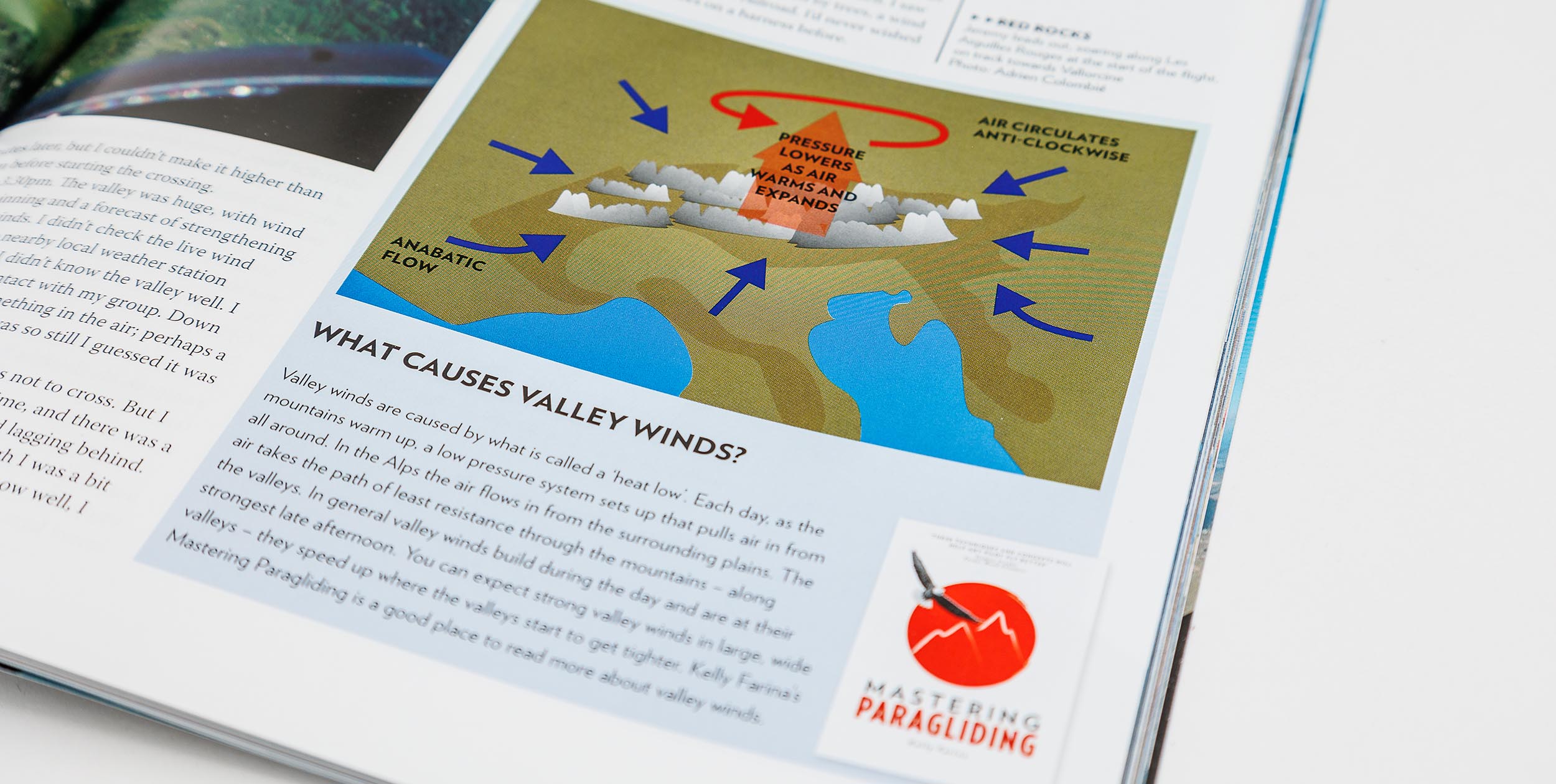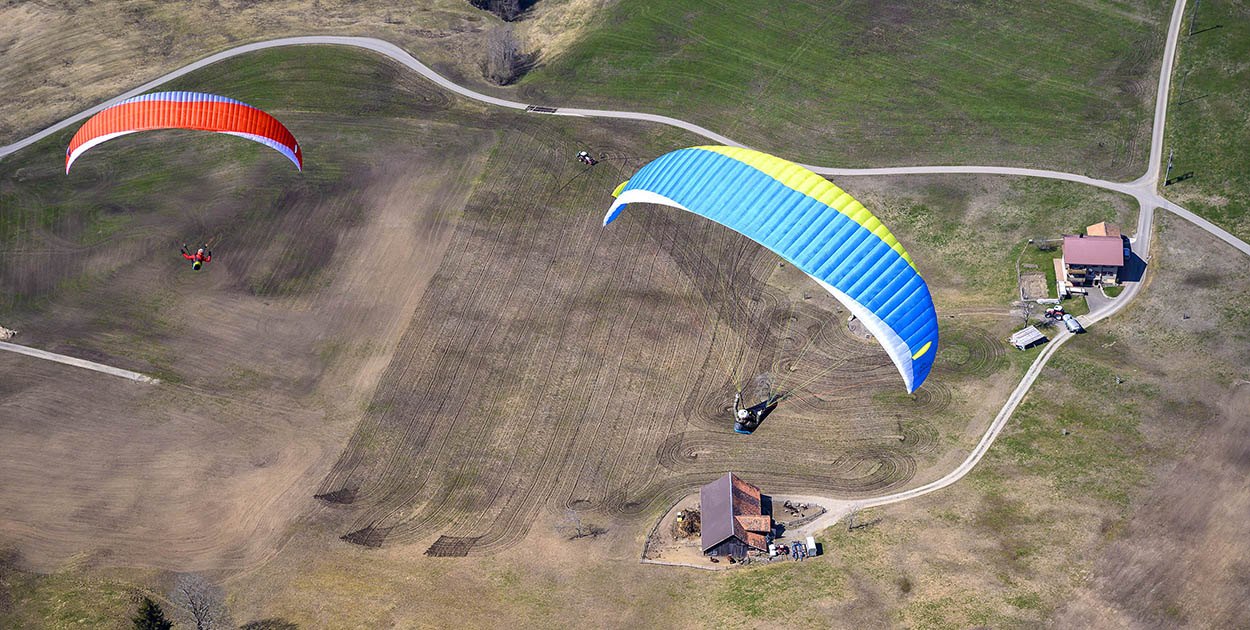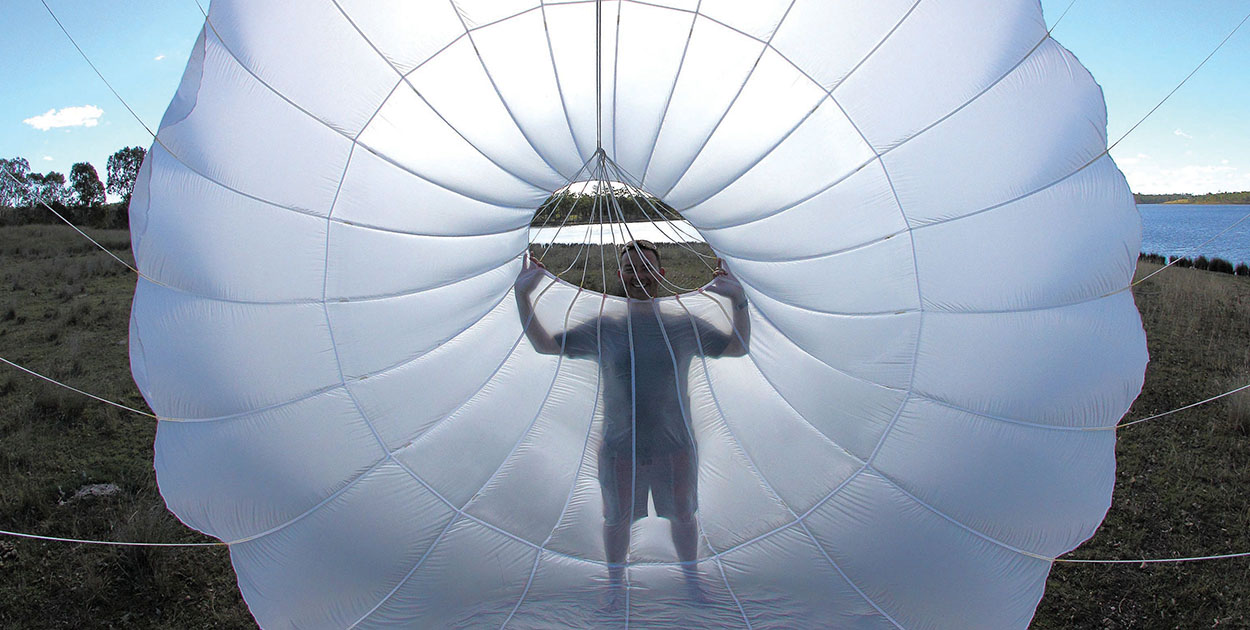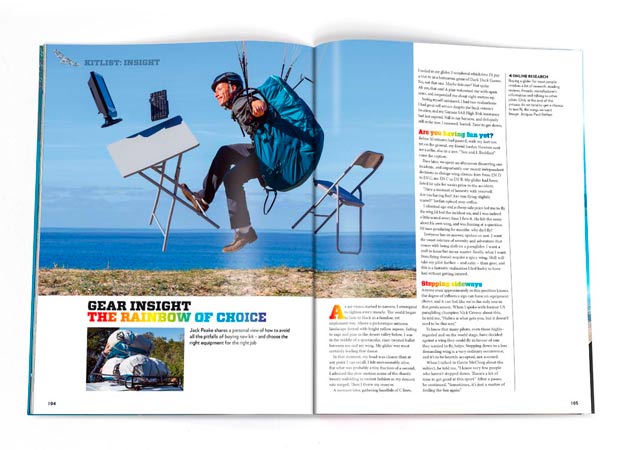Ian Blackmore suggests some tips on fine tuning your paraglider harness set up
One of the most critical times for a paraglider pilot is just after take-off. Launching into demanding thermic air or a tight lift band will require instant attention and precision flying, but often pilots find themselves fighting their harnesses and neglecting their gliders.
A good harness should allow you to simply lift your legs and slide into a comfortable, secure position, but many do not. Ever had to wriggle around to get comfortable, or let go of the brakes to pull the seat forward? We all have, but neither scenario is safe or allows you to fly at your best. But don’t rush out to buy a new harness just yet – the problem is probably just in its set-up.
Hang your harness up and play with the settings. Try and find a combination of settings that’s both comfortable in flight but also allows you to roll back into the seat easily after launch. Obviously harness designs differ but the most common problems are:
* Overly loose leg straps, which make the harness comfortable to run in but allow it to ride up as you launch. Immediately before launch, pull the seat down as far as you can and then tighten the leg straps.
* On most harnesses there’s a strap on each lateral side that controls the angle between the seat board and the backrest. It’s usually situated directly below the hang point. Set too tight, the back of the seat is raised relative to the front and you will tend to slide off the front of the seat. Lengthen this strap to lower the back of the seat and create more of a bucket effect.
* Some harnesses have a strap inside the rear of the harness which governs the length of the backrest. If this is too tight then it too will have the same effect as above.
* Simply having the seat too upright can also make it hard to get comfortable. The straps that determine how supine you are, are usually the first set below your armpits. Slacken them to make the harness more supine and lengthen them for a more upright position.
* Most harnesses have an extension to the front of the seat whose angle is also adjustable via a strap either side. It’s usually the most forward strap on each side. Too tight, and the extension will dig into the back of your thighs, too slack though and the seat will once again feel too short and have you sliding off the front.
* A poorly stowed rucksack or spare clothes can stop you nestling right into the back of your seat, especially if you have a rear mounted reserve. Try and place as much luggage as possible under the front of the seat rather than in the small of your back.
If, after trying everything mentioned here, you still can’t get comfortable then it’s worth checking with your local instructor to see if they can improve things. It may be the harness is not the ideal size or you’ve just grown larger – either through Xmas festivities or winter clothing. If, though comfier, it’s still no better to get into, then you might consider adding a stirrup.
A stirrup allows you to push your back right into the back of your harness by pushing against the stirrup with your feet. This allows you to take off and seat yourself perfectly, without interfering with the brakes or requiring you let go with your hands. They also make for a comfy footrest on long flights.
A basic stirrup consists of a length of heavy line, a flexible plastic tube and a length of bungee elastic. Thread the line through the tube (clear plastic petrol pipe will do) and attach the line on both sides to the front of your seat extension. The length should be set so that it makes a comfortable footrest for both feet when in flight. Now tie a loop in the bungee cord, big enough to fit over the front of your flying boot. Tie this to the centre of the petrol tube with enough length to not impede you running with the harness on.
Once airborne simply straighten the leg with the bungee on. This pulls the rope out allowing you to put the other foot on the tube. Then push out against the rope as you roll back into the seat. Prior to landing or when you need to use the speed system, simply place your foot on the tube and pull the other out of the bungee loop. If you’ve used a light enough line this will simply trail behind you against the bottom of the harness out of the way.
The payback for an hour’s work on a rainy day might well be some big gains in airtime and enjoyment through better comfort and control.
• Got news? Send it to us at news@xccontent.local. Fair use applies to this article: if you reproduce it online, please credit correctly and link to xcmag.com or the original article. No reproduction in print. Copyright remains with Cross Country magazine. Thanks!
Subscribe to the world’s favourite hang gliding and paragliding magazine







